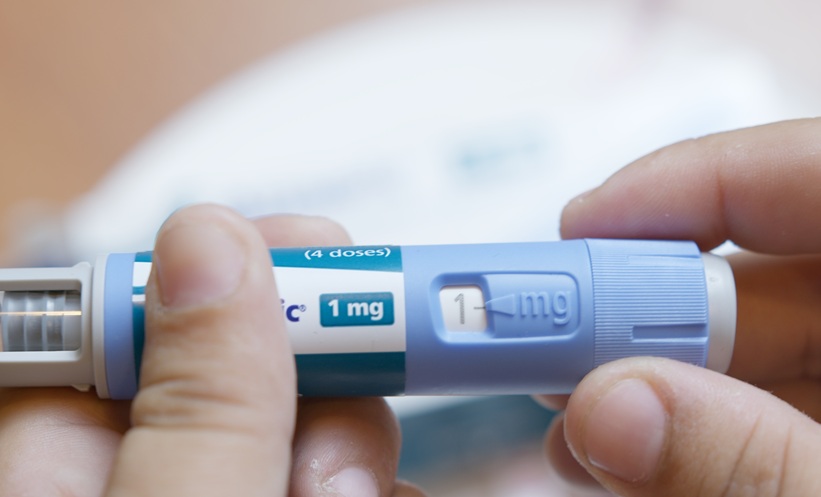The following highlights focus on several insightful and innovative abstracts at EuroPCR 2022, covering topics such as transcatheter aortic valves, catheter-directed therapy, and a novel renal denervation procedure.
Alternative to Systemic Thrombolysis Proves Successful
CATHETER-directed therapy (CDT) has a high success rate in patients with high-risk pulmonary embolism (HR-PE). Presenting the findings of the TROMPA Registry investigators at the 2022 EuroPCR, Pablo Salinas, Hospital Clínico San Carlos, Madrid, Spain, discussed the different approaches to treating patients with HR-PE and the results from the TROMPA Registry.
CDT is commonly used in patients with HR-PE when systemic thrombolysis (TL) has failed or is contraindicated. It is also indicated in patients with intermediate HR-PE (IHR-PE) as an alternative to systemic TL when a patient has haemodynamic deterioration.
The Registry studied patients presenting with HR-PE and IHR-PE (N=75) from eight centres across Spain from 2017 to 2021. The median age range of patients was 61, and 45% of patients were diagnosed with HR-PE on admission (mean BOVA score: 5.6; mean venous lactate: >3.3).
The main indication of CDT was a high bleeding risk (64.6%) and contradiction (54.7%) for systemic TL. Failure of systemic TL was represented in just 6.7% of cases. Patients with IHR-PE typically underwent CDT due to evolution into HR-PE. The patients were treated with three approaches to CDT: local TL (23%), mechanical thrombectomy (27%), and combined therapy (40%), with Salinas stressing that treatment should be decided collaboratively at PE response team meetings.
While the procedural success rate with 97.3%, there was still a high ratio of major bleeding (22.7%) and all cause in-hospital deaths (21.3%). However, Salinas stated that HR-PE has a mortality rate of 40–50%; therefore, intervention with CDT showed some improvements. Refractory shock was responsible for five out of 16 deaths, while two patients died as a result of CDT-related adverse events. However, CDT procedures lead to an increase of systemic systolic pressure (9.6±16 mmHg) and a decrease of pulmonary systolic pressure (12.5 mmHg)
Summing up these findings, Salinas stated that earlier CDT consideration, therapy awareness, and use of dedicated devices are warranted to improve results.
A Novel Approach For Performing Renal Denervation
ROBOTICS has been used in interventional cardiology for over a decade and has demonstrated some benefits in coronary interventions such as precision. A study presented at the European Association for Percutaneous Cardiovascular Interventions (EuroPCR) 2022, discussed a novel approach for performing renal denervation.
Konstantinos Bermpeis, Cardiovascular Centre Aalst, Belgium, discussed the use of the Symplicity Spyral catheter (Medtronic, Dublin, Ireland) with the CorPath GRX system (Corindus, Siemens Healthineers, Erlangen, Germany) on a patient. The researchers confirmed that the catheter was successfully tested in vitro in the catheterisation laboratory before using it on the patient. The procedure setting for renal denervation surgery included a 6 Fr guiding catheter connected to the CorPath system, the Symplicity Spyral catheter, and an operator performing the procedure using the CorPath GRX console remotely. Bermpeis confirmed that all the operators were outside the surgery room and therefore protected from radiation.
The renal denervation procedure began with advancing the guidewire using standard navigation to the right renal artery, followed by advancing the implicity spiral catheter to the kidney, and ablation. The procedure was performed without any malfunction, the contrast colour used was 49, and radiation was 77 Gycm. The patient was discharged the same day and followed up 2 months later. In 2 months the systolic blood pressure was reduced by about 20 mmHg. This is the first case study to show that the CorPath GRX system is compatible with the Symplicity Spyral Catherter; however, Bermpeis stated that following this first case their team has performed four more successful renal denervation procedures using the robotic system. One of the noteworthy benefits of robotic-assisted renal denervation is that it can reduce occupation hazards, such as exposure to radiation, for the operators as the procedure can be performed remotely. The precision of the robotic system can provide additional benefits to the patient as well. Bermpeis confirmed that their team is working on a new study to demonstrate the safety and feasibility of robotics in renal denervation.
Insights from the OBSERVANT II Study: Comparing Transcatheter Aortic Valves
TRANSCATHETER aortic valve comparisons have previously been limited to two-arm design studies. During this year’s EuroPCR Congress, in line with the theme of innovation, Giuliano Costa, Interventional Cardiologist, Division of Cardiology, University of Catania, Italy, and his colleagues shared their novel study comparing multiple transcatheter aortic valves in a multicentre study named OBSERVANT II.
Costa explained the importance of the study expressing the growing need to assess comparative outcomes of different transcatheter aortic valve replacement (TAVI) platforms in real-world practice; several manufacturers have their TAVI devices approved and available in several countries, but how do interventional cardiologists know which one is the best?
This clinical trial compared outcomes of patients using the most common second and third generation devices for TAVI in Italy. The primary outcome was death, stroke, or re-hospitalisation at 1 year. Researchers recruited n=2,989 patients with consecutive aortic stenosis undergoing TAVI from 28 medical centres across Italy from December 2016 and September 2018. Patients at the mean age of 83 years old were divided into 5 groups to receive different devices, these included: Evolut R (n=1125), Evolut PRO (n=337), SAPIEN 3 (n=768), ACURATE neo (n=290), and Portico (n=208).
Results showed the computed tomography angiography (CTA) varied across all devices as expected, with the Evolut R having the lowest CTA, and the ACURATE neo having the highest CTA. Importantly, there was no difference in the primary outcome between these five devices. Patients receiving SAPIEN 3 valve had lower rates of pulmonary vascular resistance and proton pump inhibitors; however, they had higher trans-prosthetic gradients after TAVI. Additionally, Evolut PRO had better outcomes than Evolut R, the latter being a previous generation device.
Overall, the study shows that the constant development of TAVI devices results in improved outcomes for patients undergoing TAVI, and over time the differences between these devices will be minimal, as they will continue to improve.
Assessing the Lotus Valve in Transcatheter Aortic Valve Implantation
THE LOTUS valve (Boston Scientific Corporation, Marlborough, Massachusetts, USA) has recently been withdrawn from the market. However, the valve has a number of technical features that make it interesting for patients with a challenging aortic valve anatomy. For example, the valve has comparatively higher transprosthetic mean pressure gradient.
Long-term follow-up data of the first-generation Lotus valve are lacking. Therefore, a recent study analysed all patients treated with a Lotus valve for transcatheter aortic valve replacement at the Leipzig Heart Center and Heart Center Bad Segeberg, Germany, between November 2013 and February 2017. A clinical and echocardiographic follow-up was then performed at least 3 years after valve implantation. The results were shared at EuroPCR 2022.
The primary endpoints were all-cause mortality and late onset bioprosthetic valve failure (BVF) >30 days according to the standardised European Association of Percutaneous Cardiovascular Interventions (EAPCI)/European Society of Cardiology (ESC)/European Association for Cardio-Thoracic Surgery (EACTS) definition. The secondary endpoints were bioprosthetic valve dysfunction and their components (structural and non-structural valve deterioration, clinical valve thrombosis, and endocarditis).
Overall, 229 patients were included across the two heart centres. The cumulative incidence of all-cause BVF at 5 years was shown to be high relative to other valves. In this study, the adjusted cumulative incidence of BVF (adjusted for all-cause mortality) after 5 years was 6.7% (95% confidence interval: 3.6–11.1%). By comparison, in the CHOICE trial, the BVF after 5 years for the SapienXT (Edwards Lifesciences, Irvine, California, USA) and CoreValve (Medtronic, Minneapolis, Minnesota, USA) were 4.1% and 3.4%, respectively. Interestingly, BVF after Lotus valve implantation was mainly driven by endocarditis, not paravalvular leaks or structural valve deterioration. Furthermore, the specific valve characteristic might have caused the elevated thrombogenic potential and endocarditis rate.
Based on the research results, the authors recommended that specific attention is paid to these events during long-term follow-up of individuals treated with the Lotus valve.
Study Shows No Adverse Outcomes for TAVI in Diabetic Patients
OUTCOMES from a recent trial focusing on transfemoral transcatheter aortic valve implantation (TAVI) in patients with diabetes were presented at the EuroPCR congress. Taking place from 17th–20th May 2022, this year’s interventional cardiology meeting welcomed attendees to Paris, France, breaking the virtual format for the first time since 2019.
Within the TAVI population, diabetes presents with a 30% prevalence, yet its effects on procedure outcomes are still unknown. Collaborators from the Heart Center, Amsterdam UMC, The Netherlands, assessed the procedural risk and clinical outcomes in patients with diabetes undergoing transfemoral TAVI. This multicenter study included over 12,000 transfemoral TAVI patients aged 80±7 years, with a matched population of 3,281 patient pairs, dependent on diabetes status.
Presented by Astrid van Nieuwkerk, Heart Center, Amsterdam UMC, on behalf of the study collaborators, results showed that the clinical outcomes measured did not fluctuate between patients with diabetes, and those without diabetes. The outcomes measured included stroke, major bleeding, myocardial infarction, permanent pacemaker implantation, and the length of hospital stay following TAVI. Mortality rates of patients with diabetes compared with those without diabetes were also negligible, with a statistically insignificant hazard ratio of 1.1.
The experts noted some disparities between populations with insulin-treated diabetes versus non-insulin-treated diabetes. Patients treated with insulin were younger, and had a higher prevalence of renal failure, presenting in 17% of patients, compared with 11% in the non-insulin group. Although the threshold for statistical significance was not met, a clear trend was noted between patients with insulin-treated diabetes and mortality following the TAVI procedure.
Van Nieuwkerk went on to note the limitations of the study, which included the observational design of the study, and the lack of data available on the severity of diabetes. The endpoints also did not undergo central adjudication in this trial. This study concluded that the incidence of diabetes alongside TAVI was not associated with detrimental outcomes following the procedure, underpinning the safety of this interventional treatment in diabetic patients.








